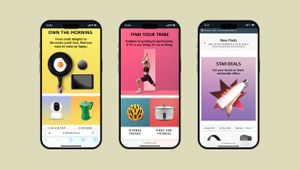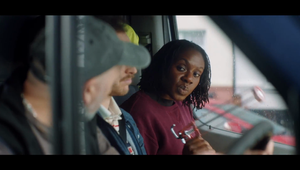
Social Media Is Your Audience’s First Look at Your Brand; So Here’s How to Make it Count

You only get one chance to make a first impression. And for near-countless millions of modern consumers, those first impressions aren’t happening on the high street, via emails, or even on your website. They’re happening on social media.
For years now, social media profiles and posts have been shop windows for brands. But in the decade since 2015 use of social media has doubled, and 86% of the planet’s adult population now use it in some form. In other words, it’s now the dominant window into the world for most people - and brands need to be intentional in carving out their place within it. After all, whilst we might like to think of a website as our brand’s ‘front page’, the reality is that far more people will discover a brand via Instagram, TikTok, or YouTube.
I’m often surprised that some of the marketing principles that are so common in CRM are infrequently applied to social media, and this needs to change. The way in which a brand’s social media page is set up should be taken as seriously as an email use journey. I’ve seen how much effort, science, and planning goes into this from my time working with Samsung, where everything was geared towards inviting the user to click ‘find out more’. Is your brand applying that same thinking on socials?
Think about how your brand represents itself on its profile pages. Everything from how you are using the grid format, to the layout of imagery. Does it look too much like advertising rather than authentic, engaging content? Is it enticing an audience member to find out more? Do the thumbnail images or captions draw you in? Are native fonts being used on-screen?
This isn’t just about the ‘pinned posts’ that we see sitting atop a brand’s profile. Personally, I’m not entirely sold on the idea of pinned posts - they can often simply be the most-liked post a brand or an account has made, which may be great for sheer visibility but not the most effective for converting users to followers or driving broader interest in a brand. They can also make a page feel static and old - a pinned post which hasn’t been updated can come across as irrelevant and deter audiences from scrolling further.
It's a challenge that the platforms are seemingly aware of. Last week Adam Mosseri, the head of Instagram, announced that the social media giant would be introducing editable grids (which would allow brands to tailor their profiles to whatever they’re prioritising at the time), as well as introducing vertical grids - as opposed to squares - which help video content to shine brighter.
To cut through, think about a more holistic approach to social content which enables a consumer journey to play out something like this:
Step 1 - Discovery: A user discovers the brand through a targeted and relevant social media ad, word of mouth, or the FYP.
Step 2 - First Impressions: As they land on the profile, the user encounters appealing, eye-catching and diverse content, each placed and designed to maximise engagement and encourage interaction.
Step 3 - Interaction: Engaged by what they see, the user elects to follow the brand, integrating themselves into the community.
Step 4 - Conversion: Through continued engagement and nurtured interest, the user progresses from follower to loyal customer, making multiple purchases within the brand's ecosystem (e.g. off the shelf, at the bar, events, etc).
In order to make that user journey a reality, your content needs to be high-quality, fresh, and relevant. It can’t feel too much like advertising - the content which thrives on social media will be the stuff that invites us to dive in with the reward of something funny, surprising, or interesting. On the other hand, the content that feels like an interruption to someone’s social media experience is sure to sink without a trace.
So it’s vital that every brand has a clear purpose underpinning its strategy on socials. What’s your value proposition - in other words, why would the average scroller stop to look at your posts? The importance of building a sense of community is the key factor here. With so many brands out there nowadays and everyone being overloaded with ads and content, potential followers (and customers) are seeking reassurance that your brand is worth the investment of their time and attention. So show them that you have a community that buys into you, that’s engaged with you. If you can’t nail that feeling of community, you’ll never maximise the potential of your social channels.
Since 2017, the number of social media users has grown by 79%. The trends are clear:
More of us are scrolling on these platforms, meaning more opportunities to introduce your
brand. Your social posts are more likely than ever before to be the difference between a new customer, and a missed opportunity. Are your socials ready?















